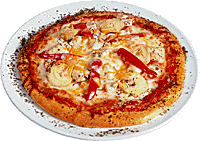
|
Osteoporosis and Your Diet As I was walking out of the department store a few weeks ago, an elderly woman in front of me fell down and landed on her left side. Both the store clerk and I rushed over to help her. We could see she was badly hurt, so the clerk called for help. The paramedics arrived within a few minutes. After examining her, they told us she had broken bones in her left arm, shoulder, and pelvic area. As we watched the ambulance hurry her away, the clerk remarked that he wouldn't have thought such a simple fall could cause such disastrous consequences. "We see it all the time in the health care field," I replied. "It's called osteoporosis." Osteoporosis, a disease that begins as early as age 35, is a progressive, deteriorating disease that causes thin, brittle bones to break easily. A slip on the carpet or a missed step can cause shattered bones beyond repair. Post-menopausal women are more susceptible to developing osteoporosis, due to a lack of estrogen, but elderly men get this disease as well. We often hear that a lack of dietary calcium contributes to osteoporosis, but we don't usually hear about the other major cause of this disease - a diet high in meat. Early research studies consistently showed that vegetarians, compared to meat-eaters, had a thicker bone density and a lower incidence of osteoporosis, but it was only hypothesized as to the reason why. We now know that sulphur, highly contained in meat, causes loss of calcium from bones. The long-term effect is decreased bone density and frail bones. In one study
conducted to examine the relationship of diet to bone thickness,
three groups of post-menopausal women took part: Subjects in
the first group consisted of vegans who eat plant foods only
(no foods of animal origin) - the second group were lacto-ovo
vegetarians who consume a diet of plant foods, eggs, and milk
products (no animal flesh) - and the third group were meat-eaters.
Results showed that the subjects with the strongest bones had
the highest intake of calcium and the lowest intake of sulphur
- the lacto-ovo vegetarians. (It was noted that both groups of
vegetarians derived protein The recommendation for daily calcium intake is 1000 mgs. per day for the average person, and 1500 mgs. for post-menopausal women. In addition to milk and milk products (cheese, ice cream, and yogurt), plant foods, like soybeans, meat substitute products made from soy, and green leafy vegetables are also an excellent source of calcium (see chart below). Not everyone can drink milk due to a condition called lactose intolerance. If you have this disorder, you might want to try Lactaid, an over-the-counter tablet that can be purchased in any drug store. You'll also want to know about soy milk, made from soybeans, which contains no lactose. Soy milk can be consumed like cow's milk, poured over cereal, and used in cooking with some modifications. It's also available in vanilla and chocolate flavors.
The last time you missed a step and fell down, you probably didn't think about the kind of food you eat, but statistics show that a healthy diet and strong bones can decrease your chances of being severely hurt. It's worth a thought or two. The following chart lists the calcium content of some common foods:
NUtritionTipS -Lactose intolerance is caused by a deficiency of the enzyme lactase, found in the small intestine, and is necessary to break down lactose in milk. Without lactase, ingestion of milk and milk products will cause gas, diarrhea, bloating, and abdominal discomfort. -Green leafy vegetables like kale, collard greens, mustard greens, broccoli, and spinach are excellent sources of calcium. Where do you get your nutrition information? Most states now have licensure laws for Dietitians and Nutritionists. Be sure your nutrition advisor is "Licensed" by the State as a Licensed Dietitian (LD) or Licensed Nutritionist (LN), or in states that don't have licensure laws, a Registered Dietitian.
CarboH,
Inc.
Home |
FAQ's |
Sample Menu |
Policies |
||||||||||||||||||

 primarily
from foods low in sulphur like peanuts, peanut butter, soybeans,
and tofu, although the lacto-ovo group also ate eggs.)
primarily
from foods low in sulphur like peanuts, peanut butter, soybeans,
and tofu, although the lacto-ovo group also ate eggs.) Does
this mean that a lacto-ovo diet, rich in calcium and devoid of
meat, is the diet of the future in preventing osteoporosis? Maybe,
when trying to maintain healthy bones, there are additional contributing
factors to consider other than your food intake, such as exercise,
genetics, and smoking. Regular exercise is recommended, the weight-bearing
kind, like running, fast walking, or jogging, to help prevent
osteoporosis. Your chances of developing osteoporosis are greater
if you smoke or if you've inherited thin bones to begin with.
Does
this mean that a lacto-ovo diet, rich in calcium and devoid of
meat, is the diet of the future in preventing osteoporosis? Maybe,
when trying to maintain healthy bones, there are additional contributing
factors to consider other than your food intake, such as exercise,
genetics, and smoking. Regular exercise is recommended, the weight-bearing
kind, like running, fast walking, or jogging, to help prevent
osteoporosis. Your chances of developing osteoporosis are greater
if you smoke or if you've inherited thin bones to begin with.